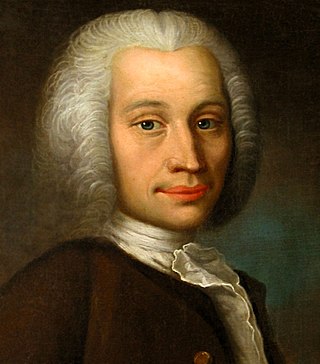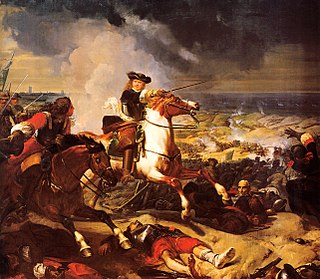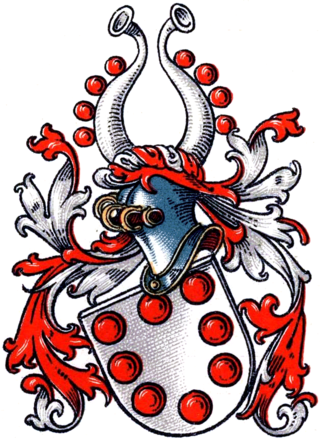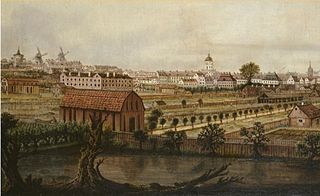Deaths
| | This section needs expansion. You can help by adding to it. (June 2015) |
- 14 September – Sophia Elisabet Brenner, poet (born 1659)
| Years in Sweden: | 1727 1728 1729 1730 1731 1732 1733 |
| Centuries: | 17th century · 18th century · 19th century |
| Decades: | 1700s 1710s 1720s 1730s 1740s 1750s 1760s |
| Years: | 1727 1728 1729 1730 1731 1732 1733 |
Events from the year 1730 in Sweden
| | This section needs expansion. You can help by adding to it. (June 2015) |

Anders Celsius was a Swedish astronomer, physicist and mathematician. He was professor of astronomy at Uppsala University from 1730 to 1744, but traveled from 1732 to 1735 visiting notable observatories in Germany, Italy and France. He founded the Uppsala Astronomical Observatory in 1741, and in 1742 proposed the Centigrade temperature scale which was later renamed Celsius in his honour.

1658 (MDCLVIII) was a common year starting on Tuesday of the Gregorian calendar and a common year starting on Friday of the Julian calendar, the 1658th year of the Common Era (CE) and Anno Domini (AD) designations, the 658th year of the 2nd millennium, the 58th year of the 17th century, and the 9th year of the 1650s decade. As of the start of 1658, the Gregorian calendar was 10 days ahead of the Julian calendar, which remained in localized use until 1923.

Frederick I was King of Sweden from 1720 until his death, having been prince consort of Sweden from 1718 to 1720, and was also Landgrave of Hesse-Kassel from 1730. He ascended the throne following the death of his brother-in-law absolutist Charles XII in the Great Northern War, and the abdication of his wife, Charles's sister and successor Ulrika Eleonora, after she had to relinquish most powers to the Riksdag of the Estates and thus chose to abdicate. His powerless reign and lack of legitimate heirs of his own saw his family's elimination from the line of succession after the parliamentary government dominated by pro-revanchist Hat Party politicians ventured into a war with Russia, which ended in defeat and the Russian tsarina Elizabeth getting Adolf Frederick of Holstein-Gottorp instated following the death of the king. Whilst being the only Swedish monarch called Frederick, he was Frederick I of Hesse-Kassel and thus Frederick I also of Sweden, though other Swedish monarchs with non-repeating names have not been given numerals.

Christian VI was King of Denmark and Norway from 1730 to 1746. The eldest surviving son of Frederick IV and Louise of Mecklenburg-Güstrow, he is considered one of Denmark-Norway's more anonymous kings, but he was a skilled politician, best known for his authoritarian regime. He was the first king of the Oldenburg dynasty to refrain from entering in any war. During his reign both compulsory confirmation (1736) and a public, nationwide school system (1739) were introduced. His chosen motto was "Deo et populo".

Frederick IV was King of Denmark and Norway from 1699 until his death. Frederick was the son of Christian V of Denmark-Norway and his wife Charlotte Amalie of Hesse-Kassel.

The Landgraviate of Hesse-Kassel, spelled Hesse-Cassel during its entire existence, was a state of the Holy Roman Empire. The state was created in 1567 when the Landgraviate of Hesse was divided upon the death of Philip I, Landgrave of Hesse. His eldest son William IV inherited the northern half of the Landgraviate and the capital of Kassel. The other sons received the Landgraviates of Hesse-Marburg, Hesse-Rheinfels and Hesse-Darmstadt.
The year 1661 in science and technology involved some significant events.

Mathias Steuchius was Bishop of the Diocese of Lund, 1694 to 1714 and Archbishop of Uppsala in the Swedish Church from 1714 to his death.

Gloria Dei Church, known locally as Old Swedes', is a historic church located in the Southwark neighborhood of Philadelphia, Pennsylvania, at 929 South Water Street, bounded by Christian Street on the north, South Christopher Columbus Boulevard on the east, and Washington Avenue on the south. It was built between 1698 and 1700, making it the oldest church in Pennsylvania and second oldest Swedish church in the United States after Holy Trinity Church in Wilmington, Delaware.

The Staël von Holstein family is a Baltic-German Baronial family originating from Westphalia.

Princess Luise Dorothea Sophie of Prussia was Hereditary Princess of Hesse-Kassel by marriage to Frederick, Hereditary Prince of Hesse-Kassel. She was the daughter of Frederick I, the first king in Prussia, by his first wife Elisabeth Henriette of Hesse-Kassel. She died in childbirth.
Events from the year 1663 in art.

Edward Willes was an Anglican bishop who was Bishop of St David's and later Bishop of Bath and Wells and one of the most prominent English cryptanalysts of his time.

William VIII ruled the German Landgraviate Hesse-Kassel from 1730 until his death, first as regent (1730–1751) and then as landgrave (1751–1760).

Ferdinand Kettler was the Duke of Courland and Semigallia from 1730 to 1737. He was married to Johanna Magdalene of Saxe-Weissenfels in 1730.
Events from the year 1799 in Sweden

Events from the year 1784 in Sweden

Events from the year 1659 in Sweden
Nişancı Süleyman Pasha was an 18th-century high-ranking Ottoman civil servant and grand vizier.
![]() Media related to 1730 in Sweden at Wikimedia Commons
Media related to 1730 in Sweden at Wikimedia Commons